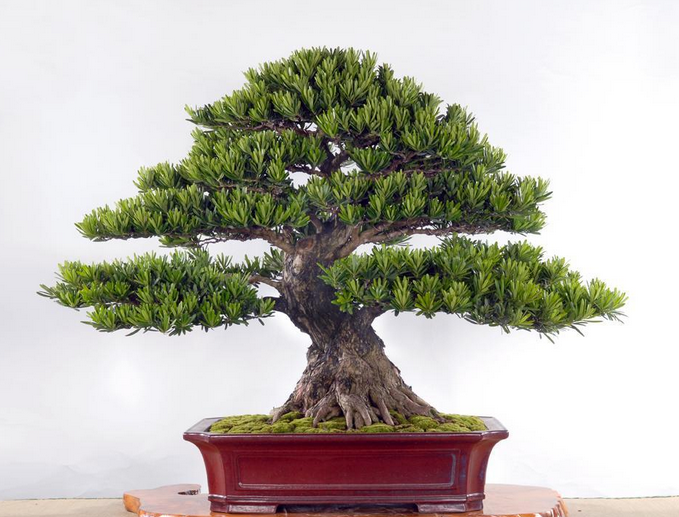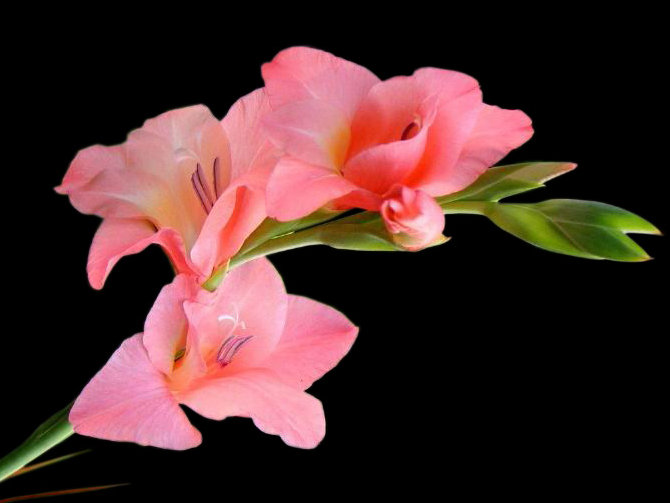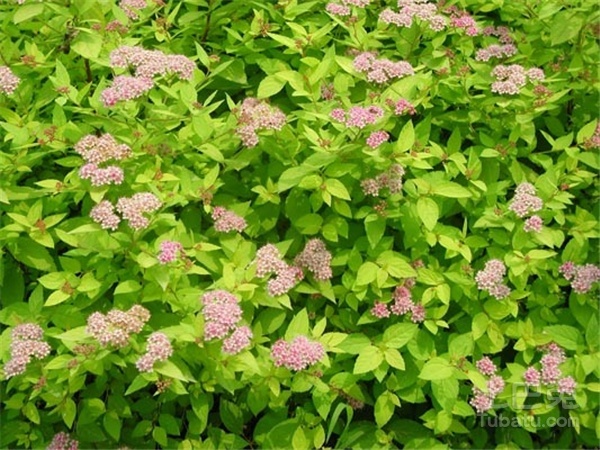What are the culture methods of Japanese mohan pine
The crown of Japanese Luohan pine is broadly ovate. Leaves striate-lanceolate, apex pointed, base cuneate, ribs raised on both sides, dark green on the surface, gray-green on the back, sometimes powdery, closely arranged, spirally alternate. It can be planted alone or in groups, and it is also suitable for hedges or bonsai materials. So what are the breeding methods of Japanese lohan pine? Next, let the editor who decorates the network give you a brief introduction.

What are the culture methods of Japanese mohan pine
1. Soil: Japanese Luohansong has strong adaptability and lax requirements on soil, and likes to be born in loose, fertile and well-drained sandy soil.
2. Watering: Luohansong is not a plant of Pinaceae and is not resistant to drought. On the contrary, Luohansong is resistant to Yin and dampness, so it should be watered frequently during the growing period, but it should not be watered. Shunde area should pay attention to regular watering when it is sunny in summer, generally watering once in the morning and evening, and often spraying foliar water to make the leaves bright green and grow well. Rain Water is usually more in summer. Luo Hansong is not resistant to waterlogging, so we should pay attention to prevent stagnant water for a long time.
3. Illumination: Pinus elliottii is a neutral and partial negative tree species, which can accept strong light and grow in a shady environment. Although the temperature is high and the sun is strong in summer, it is not necessary to shade the tree in summer because the tree is propitious to maintain its leaf shape under the condition of high temperature and strong light. Because of the tender tissue, the seedlings of Luohan pine should not be exposed to strong light for a long time, so it is suggested that they should be preserved in the shade.
4. Fertilization: Luohansong likes fertilizer, should be thin fertilizer frequently, fertilizer is mainly nitrogen fertilizer, can add appropriate amount of black alum, retting into alum fertilizer water. During the growing period, fertilization can be applied once every two months, and fertilization can be combined with watering at the same time (the ratio of water and fertilizer is 9:1). Siraitia grosvenorii planted in a large area can be applied in a semi-orchard ditch with 300 grams of fast-soluble compound fertilizer each time. Potted plants can be sprayed with 0.5% water fertilizer or 1.0% water fertilizer or thin cake liquid water fertilizer each time.
5. Insect diseases: leaf spot disease and coal fouling disease are common. Leaf spot disease can be controlled by spraying more than 50% carbendazim or topiramine wettable powder 60 ()-800 times; coal pollution disease can be irrigated with soapy water or clean water. Common pests are coir moth, shell insects, white wax insects, etc., which can be sprayed with 1000 times of omethoate emulsion or 1000 times of dichlorvos emulsion.
6. Pruning: for the modeled Japanese lohan pine bonsai, we must pay attention to heart-picking and pruning to prevent the branches and leaves from growing so as to maintain the original posture. Pruning and heart-picking work is best carried out during the growth period of spring and autumn.
What are the culture methods of Japanese mohan pine
What are the breeding methods of Japanese Luohansong? How to raise Japanese Luohansong?
For beginners who breed Luohansong, it will not only get twice the result with twice the effort, but also cause damage and waste of seedlings if they do not understand and learn in advance the breeding method of Luohansong and how to raise it in Japan. Therefore, it is imperative to understand the breeding method of Luohansong.
[wonderful recommendation] Indoor plants touch fragrant wood, hydroponic plants, small potted plants, flowers, fengshui, radiation protection plants, lover grass
What are the breeding methods of Luohansong? How to raise Japanese Luohansong?
[plant archives]
English name: Luo Hansong
Scientific name: Podocarpus macrophyllus
Aliases: Luohanshan, evergreen Luohanshan, Taxodium chinense, Pinus elliottii, Xianbai, Luo Hanbai, Jiangnanbai
Family: Luohan pine family
Genus: Luohansong
Distribution of origin: Luohansong is common in South China, including Hong Kong.
Morphological features: evergreen trees, up to 18 meters high, usually pruned to keep low, leaves alternate, arranged in spiral shape; flowering in early summer, male and female flowers cylindrical, 3-5 clustered in leaf axils, female flowers solitary in leaf axils; species larger than seeds, mature red, plus green seeds, like bald monks wearing red robes, hence the name Luohansong.
[culture method of Luohansong]
◆ try to use fertile soil, such as sandy loam, rotten leaf soil and other fertile soil with good drainage. After the plant grows up, it is necessary to change the flowerpot in time. Luohansong has a high demand for flowerpot, and it should be ornamental to a certain extent, and its value is not cheap, but it should not affect the growth and development of Luohansong in the later stage because of this.
◆ should keep enough water, but should not go too far. Luohansong is a humid plant. In summer, the soil should be moist, but there should be no stagnant water. In winter, it is not suitable to pour too much water.
◆ as far as possible to maintain good indoor ventilation, if placed in an unventilated environment is easy to affect its growth, properly receive a certain amount of sunlight, but can not be exposed to the sun.
◆ Pinus elliottii is vulnerable to coir moth, shell insect and wax insect. In addition, leaf spot and branch blight are also harmful to leaf spot and branch blight. When diseases and insect pests are found, they must be dealt with in a timely manner and do not miss the opportunity.
[how to raise Japanese apricot pine]
Japanese Luohansong is rich in Japanese Luohansong, hence the name Japanese Luohansong; as for how to raise Japanese Luohansong, in fact, the general method is more or less the same as the basic methods of other types of Luohansong; just need to pay special attention to individual methods that are not suitable to be used in Japanese Luohansong culture.
Conclusion: only after your careful cultivation and care, Luohansong is the most precious and beautiful to you. No matter how beautiful and spectacular other Luohansong is, it is not as beautiful as the Luohansong planted by yourself.
[more Encyclopedia of plants]
The culture method of Douban green the culture method of iron tree the function of cactus the characteristics of peony flower how to raise Milan flower
The culture methods and precautions of green pineapple? does the fairy ball protect against radiation? the current culture method of cyclamen leaves yellow and blue witch price
The cultivation method of iron tree of rich bamboo and iron tree is the rubber tree poisonous? is the sun flower language safe tree cyclamen Phnom Penh tiger skin orchid
How to raise nine big flowers of Cymbidium, Cymbidium, Red Palm, Red Crane, poisonous Cymbidium, Cymbidium, C
The Culture method of Japanese Luohansong Picture of Japanese Luohansong
✿ related reading recommended ✿ shore flower picture ✿ Phnom Penh June snow ✿ cactus has leaves (◕ flowers ◕✿) flowers bonsai, plant culture please pay attention to Merlot flower bonsai area! . Japanese Luohansong comes from Japan, and he likes a warm, humid, semi-shady environment. He is very adaptable and can grow freely in the hot sun. Do you know anything about it? Today, the editor will introduce the breeding methods of Japanese Luohansong and show you the pictures of Japanese Luohansong. .. the planting techniques of Japanese Pinus elliottii are commonly used for sowing and cutting, sowing, sowing after seed collection in August, and germinating about 10 days later. Cuttings are carried out in spring and autumn, dormant branches are selected in spring, semi-woody twigs are selected in autumn, 12-15 cm, inserted into the seedbed of sand and soil, and take root in about 50-60 days. Softwood cutting refers to the cutting method of using semi-mature branches as cuttings in the growing season of seedlings, which is mainly suitable for evergreen and semi-evergreen woody flowers. . Japanese Pinus elliottii is a neutral and partial negative tree species, which can accept strong light and grow in a shady environment. Although the temperature is high and the sun is strong in summer, it is not necessary to shade the tree in summer because the tree is propitious to maintain its leaf shape under the condition of high temperature and strong light. Because of the tender tissue, the seedlings of Luohan pine should not be exposed to strong light for a long time, so it is suggested that they should be preserved in the shade. . Japanese Luohansong culture fertilization, Japanese Luohansong like fertilizer, should be thin fertilizer frequently, fertilizer is mainly nitrogen fertilizer, can add appropriate amount of black alum, retting into alum fertilizer water. Fertilization can be applied once every two months during the growing period, and fertilization can be combined with watering at the same time. Siraitia grosvenorii planted in a large area can be applied in a semi-orchard ditch with 300 grams of fast-soluble compound fertilizer each time. Potted plants can be sprayed with 0.5% water fertilizer or 1.0% water fertilizer or thin cake liquid water fertilizer each time. . Japanese Luohansong is not a member of the pine family and is not resistant to drought. On the contrary, Japanese Luohan pine is resistant to Yin and dampness, so it should be watered frequently during the growing period, but it should not be watered. Shunde area should pay attention to regular watering when it is sunny in summer, generally watering once in the morning and evening, and often spraying foliar water to make the leaves bright green and grow well. Rain Water is usually more in summer. Luo Hansong is not resistant to waterlogging, so we should pay attention to prevent stagnant water for a long time. . Japanese Luohan pine is often harmed by leaf spot and coal fouling disease. Leaf spot disease can be controlled by spraying more than 50% carbendazim or topiramine wettable powder 600-800 times; coal pollution disease can be irrigated with soapy water or clean water. Common pests are coir moth, shell insects, white wax insects, etc., which can be sprayed with 1000 times of omethoate emulsion or 1000 times of dichlorvos emulsion. . because the Japanese Luohan pine tree shape is quaint, the combination of seed and seed stalk is strange and lovable, and many temples and houses are planted in the south. It can be planted in front of the door, planted alone in the atrium, or matched with rockery and lake rocks in a corner of the wall. Mottled leaves of Siraitia grossedentata can be planted as flower beds or potted plants for indoor appreciation. . Japanese Luohansong has high ornamental value and is highly ornamental when planted around the house. with some lighter green flowers and plants, it simply becomes a beautiful scenery. Today, the editor's introduction to the breeding method of Japanese Luohansong is over. Thank you for your appreciation.
- Prev

The cultivation methods of Gladiolus six ways to make your flowers bloom
Gladiolus is also known as calamus orchid, sword orchid, flat bamboo lotus, ten brocade, thirteen Taibao, etc., the original species is produced in South Africa. The main producing countries are the United States, the Netherlands, Israel and Japan. Gladiolus is an important fresh cut flower, which can be used as flower basket, bouquet, vase and so on. Flower borders and special flower beds can be arranged. Dwarf varieties can be viewed in pots.
- Next

Small potted plants and great knowledge, how to raise Fufang vine bonsai
Introduction: Fufang vine is an excellent landscaping plant, which is often used for vertical greening or ground cover plant. The bonsai made with it has strong roots, quaint stems, dark green leaves in spring, summer and early autumn, and red leaves after frost in late autumn. It is a very popular bonsai tree species in the north.
Related
- Fuxing push coffee new agricultural production and marketing class: lack of small-scale processing plants
- Jujube rice field leisure farm deep ploughing Yilan for five years to create a space for organic food and play
- Nongyu Farm-A trial of organic papaya for brave women with advanced technology
- Four points for attention in the prevention and control of diseases and insect pests of edible fungi
- How to add nutrient solution to Edible Fungi
- Is there any good way to control edible fungus mites?
- Open Inoculation Technology of Edible Fungi
- Is there any clever way to use fertilizer for edible fungus in winter?
- What agents are used to kill the pathogens of edible fungi in the mushroom shed?
- Rapid drying of Edible Fungi

